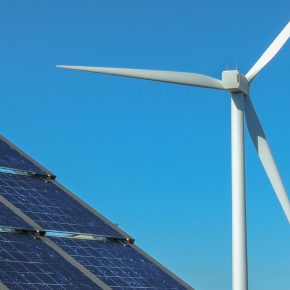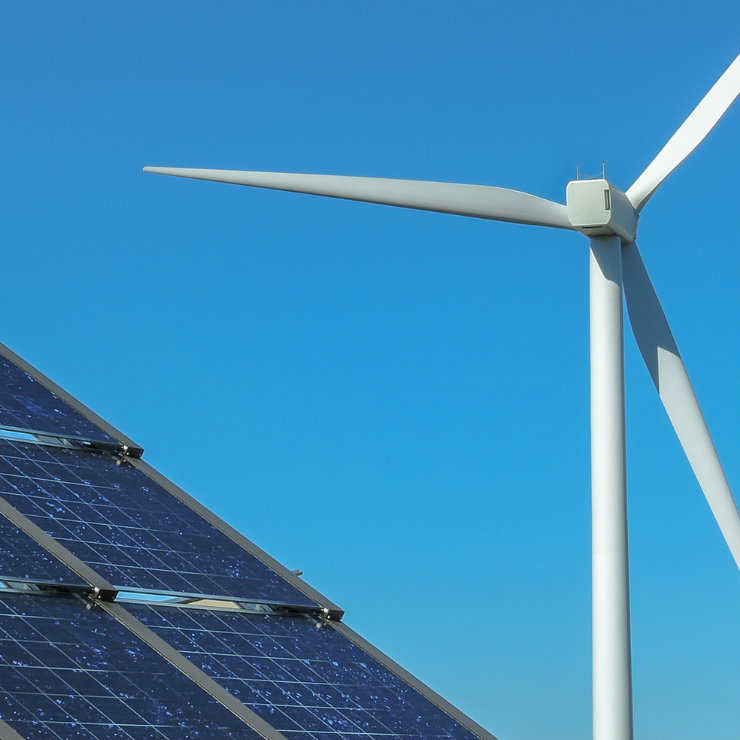
(Ed Suominen, CC BY-NC)
Albania’s Minister of Energy and Industry, Damian Gjiknuri and EBRD Head of Albania, Matteo Colangeli signed a Memorandum of Understanding (MoU) to stimulate investments in solar power generation. The document said it „will develop projects in Albania through an auction-based system, in accordance with international best practice.”
Implementation of the MoU’s roadmap will significantly increase the attractiveness of investments in solar power generation in the country and thus lessen Albania’s reliance on hydropower and energy imports, according to the EBRD. „The signing of this Memorandum is a very important step towards establishing solar power generation in Albania,” EBRD Head of Albania, Matteo Colangeli, said.
„The government and the EBRD will cooperate in developing and implementing a framework for the allocation, through a competitive bidding process for private investors in the building, owning and operating of solar power projects in Albania with a total combined capacity of 50-100 MW. We look forward to working with the government towards turning this objective into reality,” he added.
„Increasing the use of renewable energy technologies is an important step towards a more sustainable development, which brings great benefits to Albanian industry,” Minister of Energy and Industry, Damian Gjiknuri said. „Solar energy can also be the strategic solution to reduce the dependence on imports, and improve not only the security of energy supply but also the country’s macroeconomic and political security. The new support auctioning schemes for renewable energy will add value in the energy sector and the domestic economy.”
The EBRD has invested more than EUR1bn in 77 projects in Albania. Infrastructure and energy are the largest sectors of EBRD investments, reflecting both the country’s most pressing needs and strongest potential.
Albania could produce 43 per cent of its energy by 2050 by using only solar plant, according to a study by Marc Jacobson, a Stanford University professor. Albania, throughout a year has approximately 2,400 hours of sun and an average of 240 – 300 sunny days.
According to the data by the Albania Energy Association, it is foreseen that until 2025, 4 per cent of the total amount of electric energy produced in Albania (around 400 GWh/year) to be produced from wind.
Support for renewables
Albania has one of the highest percentages of electricity produced from renewable energy sources (RES) in its electricity mix – more than 95 per cent of electricity generated comes from hydropower generation. In spite of this, Albania has not had a comprehensive policy on the support of RES in place to date.
The country adopted legislation for the promotion of RES facilities in 2013. Under this legislation, the main promotion measure consisted of the implementation of a feed-in tariff system for electricity generated from RES projects with an installed capacity not exceeding 15 MW.
Since Albania has candidacy status for an accession to the EU, it is obliged to harmonize its laws with EU laws and the government drafted a new Act on Promotion of the Use of Energy from Renewable Sources in February.
Under the Draft Act, the main promotional measure is a specific form of a feed-in tariff called contract for difference („CfD”), which can be characterized as a sliding feed-in premium system, meaning that renewable energy producers will sell the electricity in the market and receive the variable difference between the auction price and the electricity market price (reference price) as a support measure.
The applicable target for RES share in gross final consumption of energy in Albania for year 2020 is 38 per cent. Currently, this share is at the level of approximately 31 per cent.
Albania’s energy mix
Based on research by Orion Zavalani et al., Polytechnic University of Tirana.
Biomass energy
Forestry zones cover around 36 per cent of the total surface of the country. The total reserves of fuel wood in Albania are estimated about 6 Mtoe. The energy potential from agricultural residues was calculated at approximately around 43,000 GW and the energy potential from animal residue’s as well as for agricultural residue potations is calculated at approximately 70 toe/year with a trend to be increased in the future. The potential of urban wastes from the main Albanian cities was calculated as approximately 405615 Toe with a trend to be increased in the future.
The biomass from the so-called energetic plants is not applied yet. Albania is not producing bio fuels.
Hydropower
Albania, with its surface of 28,748 square kilometer (skm), has a hydrographical distribution of 44,000 skm, or 57 per cent more than state territory. The country has the potential to produce 16 to 18 TWh of hydro energy. So far, has been exploited one third of the potential.
Geothermal resources
Albania is in the feasibility phase of assessing the geothermic energy use potentials.
Wind energy
It is foreseen that 4 per cent of the total amount of electric energy produced in country (around 400 GWh/year) until 2025 will be produced from wind. A considerable number of areas with high wind energy potentials are identified in the seaside lowland with capacity of near 30 GWh/year or 0.7 per cent of the actual national electric energy production.
Solar energy
Albania receives a level of solar radiation of more than 1,500 kWh/square meter (sqm) per year, within a range of 1,185 to 1,690 kWh/sqm/y. The average of daily solar radiation is near 4.1 kWh/sqm changing from a minimum of 3.2kWh/sqm in the Northeast up to a maximum of 4.6kWh/sqm in the South-Western. If Albania would develop the solar panel system, the potential production of warm water shall be equivalent to the quantity of energy of 1000 GWhtermik or 125 MWthermal of the installed power.


